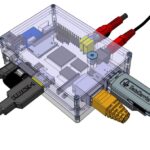No products in the cart.
Dear Readers, MALWARE FORENSICS: DETECTING THE UNKNOWN - check our new issue! We are proud and excited to present you a new issue ofeForensics Magazine! In the focus: Malware Forensics: Detecting the Unknown. Discover and understand Malware Architecture, hunt for malware traces, get to know Volatility tool, go through a real case....
Author
Latest Articles
 Our AuthorsFebruary 19, 2018Meet our expert - Cordny Nederkoorn
Our AuthorsFebruary 19, 2018Meet our expert - Cordny Nederkoorn BlogJuly 11, 2017For the Love of The Game by Jessica Gulick
BlogJuly 11, 2017For the Love of The Game by Jessica Gulick BlogJune 29, 2016Finding Advanced Malware Using Volatility
BlogJune 29, 2016Finding Advanced Malware Using Volatility BlogJuly 3, 2015Banana Pi Pro - Review
BlogJuly 3, 2015Banana Pi Pro - Review